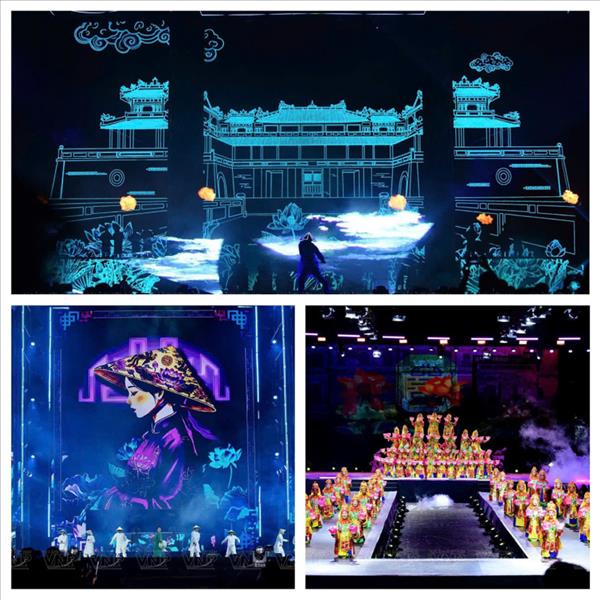Ca tru, a form of traditional ceremonial singing, has been increasingly developed in both quantity and quality through activities of clubs in Hanoi, one of the largest cradles of the genre in the country.
Hanoi now counts 16 Ca tru clubs, with the number of singers and instrument players ranging from 250 to 300. The art form is considered as a specialty of the capital city.
Before the outbreak of COVID-19 pandemic, the city organised Ca tru performances at Kim Ngan communal house in Hang Bac street, Quan De Temple in Hang Buom street, Bich Cau Dao Quan, and in a number of music spaces.
Thang Long and Hanoi clubs are the units that regularly organise Ca tru performances. Meanwhile, Thai Ha club not only performs in the country but also brings this art form to other countries and territories such as the Republic of Korea (RoK), Taiwan (China), the US, and Japan.
Ca tru clubs in Hanoi still maintain activities and practice the heritage in accordance with a fixed schedule, and continue to organise classes.
Head of the heritage management office of the municipal Department of Culture and Sport Pham Thi Lan Anh said the city has strongly invested in preserving and developing Ca tru, focusing on documenting the intangible culture heritage, and organising training courses, festivals and contests, and art and tourism activities to create “playgrounds” for practitioners as well as to seek young talents.
Ca tru has been also performed at major diplomatic events of the city, she said.
In recent years, Hanoi has recorded the increasing number of artisans directly practicing the heritage. However, the masters in this art genre are all old.
With great efforts of the municipal authorities, a generation of young artists has been trained, contributing to preserving and developing the heritage.
Ca tru is a complex form of sung poetry found in the north of Vietnam using lyrics written in traditional Vietnamese poetic forms. A Ca tru group comprises of three performers: a female singer who uses breathing techniques and vibrato to create unique ornamented sounds, while playing the clappers or striking a wooden box, and two instrumentalists who produce the deep tone of a three-stringed lute and the strong sounds of a praise drum.
Some ca tru performances also include dance. The varied forms of Ca tru fulfill different social purposes, including worship singing, singing for entertainment, singing in royal palaces, and competitive singing.
The art genre appeared in the north around the 15th century and thrived until the early 20th century. Since then, it has decreased in popularity due to the spread of modern recreational and cultural activities.
That UNESCO put Vietnam’s Ca Tru into its list of Intangible Cultural Heritages in Need of Urgent Safeguarding has affirmed this heritage’s value to humanity.
To preserve the heritage, municipal authorities need to take concerted solutions, focusing on raising public awareness of the importance of protecting the art form.
Plans to promote the value of the intangible culture heritage should be annually developed and deployed in districts where Ca tru clubs are operating, thus creating favourable conditions for Ca tru clubs to promote their performance and practice. /.
Hanoi now counts 16 Ca tru clubs, with the number of singers and instrument players ranging from 250 to 300. The art form is considered as a specialty of the capital city.
Before the outbreak of COVID-19 pandemic, the city organised Ca tru performances at Kim Ngan communal house in Hang Bac street, Quan De Temple in Hang Buom street, Bich Cau Dao Quan, and in a number of music spaces.
Thang Long and Hanoi clubs are the units that regularly organise Ca tru performances. Meanwhile, Thai Ha club not only performs in the country but also brings this art form to other countries and territories such as the Republic of Korea (RoK), Taiwan (China), the US, and Japan.
Ca tru clubs in Hanoi still maintain activities and practice the heritage in accordance with a fixed schedule, and continue to organise classes.
Head of the heritage management office of the municipal Department of Culture and Sport Pham Thi Lan Anh said the city has strongly invested in preserving and developing Ca tru, focusing on documenting the intangible culture heritage, and organising training courses, festivals and contests, and art and tourism activities to create “playgrounds” for practitioners as well as to seek young talents.
Ca tru has been also performed at major diplomatic events of the city, she said.
In recent years, Hanoi has recorded the increasing number of artisans directly practicing the heritage. However, the masters in this art genre are all old.
With great efforts of the municipal authorities, a generation of young artists has been trained, contributing to preserving and developing the heritage.
Ca tru is a complex form of sung poetry found in the north of Vietnam using lyrics written in traditional Vietnamese poetic forms. A Ca tru group comprises of three performers: a female singer who uses breathing techniques and vibrato to create unique ornamented sounds, while playing the clappers or striking a wooden box, and two instrumentalists who produce the deep tone of a three-stringed lute and the strong sounds of a praise drum.
Some ca tru performances also include dance. The varied forms of Ca tru fulfill different social purposes, including worship singing, singing for entertainment, singing in royal palaces, and competitive singing.
The art genre appeared in the north around the 15th century and thrived until the early 20th century. Since then, it has decreased in popularity due to the spread of modern recreational and cultural activities.
That UNESCO put Vietnam’s Ca Tru into its list of Intangible Cultural Heritages in Need of Urgent Safeguarding has affirmed this heritage’s value to humanity.
To preserve the heritage, municipal authorities need to take concerted solutions, focusing on raising public awareness of the importance of protecting the art form.
Plans to promote the value of the intangible culture heritage should be annually developed and deployed in districts where Ca tru clubs are operating, thus creating favourable conditions for Ca tru clubs to promote their performance and practice. /.
VNA/VNP

















